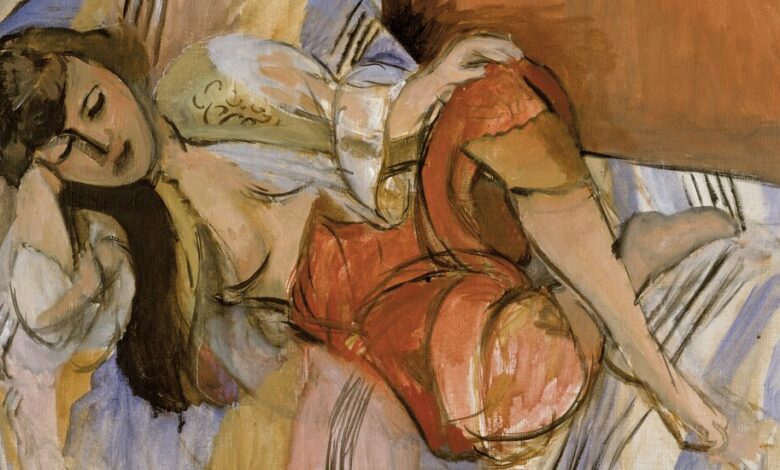Amsterdam Museum returns work by Matisse that was sold under duress during World War II

The Stedelijk Museum in Amsterdam announces that it is returning a painting by Henri Matisse, which has been in its collection since 1941, to the heirs of its former owner, a German-Jewish textile manufacturer and art patron who sold the painting to help his family escape to finance the Dutch Nazi occupation.
The museum announced the restitution of the work ‘Odalisque’ on Tuesday after the Amsterdam city council received ‘binding advice’ from the Dutch Restitution Committee, a government commission that rules on cases of art looted by the Nazis.
The heirs said in a statement that the decision provided symbolic justice. “The Matisse made the same journey from Berlin to Amsterdam as our grandparents did,” they said. “But it stopped there at the Stedelijk, with almost no recognition of where it came from for 80 years.”
Before World War II, Matisse’s “Odalisque”, dated 1920-21, was part of the private art collection of Albert and Marie Stern. Albert and his brother Siegbert had helped found a leading Berlin women’s fashion company in the 19th century. Albert and Marie were patrons of the arts and regularly organized art and music events at their home in Berlin. Marie, who had studied art, put together a collection that also included works by Vincent van Gogh and Edvard Munch.
After the Nazis seized power in Germany in 1933, the Sterns suffered several anti-Semitic blows. The state expropriated their business and stole much of their property, and the family was threatened with physical violence, according to Anne Webber, the founder and co-chair of the Commission for Plundered Art in Europe, which handled the restitution claim.
According to the Commission, the couple moved to Amsterdam in 1937, taking some of their belongings with them, while applying for visas to Cuba, Mexico and the United States, among other countries, ultimately without success. By July 1941, the family had little food and sold everything they had in the hope of escaping Europe.
The Matisse was sold to the Stedelijk in 1941 through a family friend. Shortly thereafter, the entire Stern family was arrested and sent to concentration camps, where Albert’s twin sister, the couple’s two adult sons, and many other family members were murdered.
The couple’s grandchildren, aged 5 and 16 months, were sent to Theresienstadt camp in what is now the Czech Republic, but managed to survive, according to the Commission. Marie, who was sent to the Liebenau camp in Germany, also survived the war, but Albert was murdered in the Laufen Castle internment camp.
“The continued pressure that they experienced from the Nazis, and the pressure that they faced, the looming threat to their lives, was very powerful,” Webber said in an interview.
“They were physically threatened for months,” she added. “We did a huge amount of research and found a remarkable number of documents in about 26 different archives that tell this story.”
Toon van Mierlo, chairman of the Restitution Committee, called the evidence of a forced sale in this case very convincing.
“The conditions in which Albert Stern lived in Amsterdam after he fled Germany were terrible, terrible,” he said. “He did his utmost to bring his family to safety in good order, but he could not do it and eventually he died at the end of the war.”
Van Mierlo said of Matisse’s restitution: “I feel that justice has been done.”
Matisse’s ‘Odalisque’ hangs in the museum’s permanent collection, alongside other odalisques – or reclining nudes – painted in the same period by Pablo Picasso and Wassily Kandinsky.
“We don’t have many Matisses, so it is an important work,” says Rein Wolfs, director of the Stedelijk Museum, “which demonstrates the importance of Orientalism in French painting.”
He declined to estimate the monetary value of the work, but he said its personal history outweighed financial considerations.
“It’s very important that we can restore this work,” Wolfs said. “It doesn’t fix what happened in the war, but at least some justice can be done so many years later.”
The municipality of Amsterdam, the official owner of the Matisse, is expected to transfer the work to Stern’s family members this year, according to a spokeswoman for the Stedelijk.
“The return of works of art, such as the Odalisque painting, can mean a lot to the victims and is of great importance for the recognition of the injustice done to them,” Amsterdam councilor for culture Touria Meliani said in a statement. “As a city we have a role and responsibility in this.”




